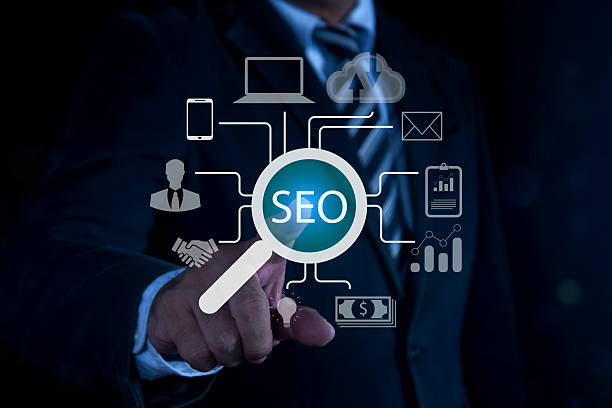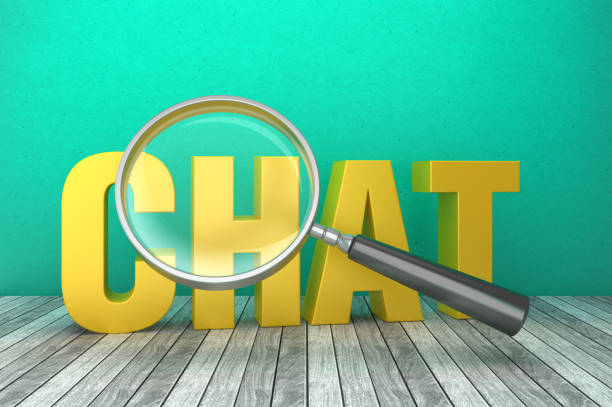What is On-Page SEO and Why is it Important?

#On_Page_SEO, also known as On-Page SEO, refers to a set of techniques and actions performed within your website to improve its ranking in Google search results and other search engines.
These actions include optimizing content, website structure, HTML tags, and other technical factors.
Why is On-Page SEO important? On-Page SEO helps search engines better understand the content of your site and show it to relevant users.
A website with strong On-Page SEO provides a better user experience, which leads to increased user dwell time on the site, reduced bounce rate, and ultimately increased conversion rate.
A strong On-Page SEO strategy can attract more organic traffic to your website, which leads to increased brand awareness and sales.
In fact, On-Page SEO is a process by which you show search engines what your website is about and why they should show it to users.
This process includes keyword optimization, creating quality content, improving website structure, and creating internal links.
Without proper On-Page SEO, your Off-Page SEO efforts will not achieve the desired results.
Therefore, investing in On-Page SEO is a necessity for any website that wants to succeed in the online world.
Did you know that 85% of customers check your company’s website before any interaction?
With Rasaweb, build a company website that deserves your credibility.
✅ Increase customer credibility and trust
✅ Attract high-quality leads
⚡ Get free website design consultation
Keyword Research – The Cornerstone of On-Page SEO

Keyword research is the first and most important step in an On-Page SEO strategy.
You need to identify the words that users use to search for your products or services.
These keywords should be relevant to your business and have a good search volume.
There are various tools for keyword research, including Google Keyword Planner, Ahrefs, SEMrush, and Ubersuggest.
Using these tools, you can find keywords related to your business and check their competition and search volume.
Once you have identified keywords, you should use them naturally and relevantly in your website content.
Overuse of keywords (Keyword Stuffing) can lead to your site being penalized by Google.
In addition, you should use your keywords in Title Tags, Meta Descriptions, Headings, and URLs.
In On-Page SEO, keep in mind that your chosen keywords should match the user’s search intent.
In other words, your content should answer the user’s questions and needs.
Keyword research is an ongoing process.
You should regularly identify new keywords and update your On-Page SEO strategy based on changes in user behavior and search engine algorithms.
Content Optimization – The King of On-Page SEO

Content is king! This phrase is often heard in the world of SEO, and it is true.
Quality and valuable content is one of the most important ranking factors in Google.
Your content should be unique, engaging, informative, and relevant to your keywords.
Avoid creating duplicate content, as this can harm your site’s ranking.
Present your content in a structured and understandable manner.
Use Headings, Subheadings, paragraphs, and lists to organize your content.
Add images and videos to your content to make it more engaging and interactive.
Optimize images and videos with Alt Text so that search engines can understand them.
Update your content regularly to keep it fresh for users and search engines.
Content optimization is an ongoing process.
You should regularly review your content and update it based on changes in user behavior and search engine algorithms.
In On-Page SEO, quality content not only improves your site’s ranking in search results, but also increases user engagement with your site.
Users who find quality and valuable content are more likely to stay on your site, visit other pages, and eventually become customers.
| Factor | Description |
|---|---|
| Content Quality | Unique, engaging, informative, and relevant |
| Content Structure | Use of headings, subheadings, paragraphs, and lists |
| Image and Video Optimization | Use of Alt Text |
| Content Update | Regular content updates for freshness |
Title and Meta Description Optimization

Title Tags and Meta Descriptions are important elements in On-Page SEO.
Title tags display the title of your page in search results, and meta descriptions provide a summary of the content of your page.
These two elements should be engaging, relevant, and include your keywords.
The length of title tags should be between 50 and 60 characters, and the length of meta descriptions should be between 150 and 160 characters.
Avoid using duplicate title tags and meta descriptions, as this can harm your site’s ranking.
Regularly review your title tags and meta descriptions and update them based on changes in user behavior and search engine algorithms.
In fact, title tags and meta descriptions are the first things users see in search results.
Therefore, optimizing these two elements can have a significant impact on your site’s Click-Through Rate.
An engaging title tag and a relevant meta description can encourage users to click on your site’s link.
In On-Page SEO, titles and meta descriptions play an important role in attracting users.
The title should answer the user’s main question, and the meta description should convince them that by clicking on the link, they will get the answer they are looking for.
Does your current company website present a worthy image of your brand and attract new customers?
If not, turn this challenge into an opportunity with Rasaweb’s professional corporate website design services.
✅ Significantly improves your brand’s credibility and image.
✅ Paves the way for attracting leads and new customers.
⚡ Contact Rasaweb now for a free and specialized consultation!
URL Optimization

URLs should also be optimized.
Your URLs should be short, descriptive, and include your keywords.
Avoid using long and complex URLs, as this can be confusing for users and search engines.
Separate your URLs with hyphens (-).
Avoid using uppercase letters and special characters in your URLs.
Regularly review your URLs and update them based on changes to your site’s content.
An optimized URL helps search engines better understand the content of your page and show it to relevant users.
In addition, a readable and descriptive URL can help users learn about the content of the page before clicking on the link.
In On-Page SEO, URLs play an important role in user experience.
A good URL can help users easily navigate your site and find the content they are looking for.
In fact, URLs should be designed to be understandable to both search engines and users.
Internal Linking – Creating a Strong Structure for the Site

Internal linking refers to the process of creating links between different pages of your website.
Internal linking helps search engines better understand the structure of your site and identify your important pages.
In addition, internal linking can help users easily navigate your site and find relevant content.
Internal links should be relevant to the content of the page they are linking to.
Use appropriate Anchor Text for your internal links.
Anchor text should be descriptive and include your keywords.
Regularly check your internal links and make sure they are all working correctly.
Internal linking is an important strategy in On-Page SEO that can help improve your site’s ranking in search results.
By creating a strong structure for your site, you can show search engines that your site has valuable and relevant content.
In fact, internal linking not only helps improve your site’s SEO, but also improves user experience.
Users who can easily navigate your site and find the content they are looking for are more likely to stay on your site and become customers.
On-Page SEO with good linking for the site.
Image Optimization

Images play an important role in attracting and engaging users with your website.
Image optimization for On-Page SEO includes the following: Compressing images to reduce file size and increase page load speed.
Using the appropriate format for images (JPEG, PNG, GIF).
Adding Alt Text to images to describe the content of the image to search engines.
Using a descriptive file name for images.
Optimizing images not only improves your site’s SEO, but also improves user experience.
Low-volume images load quickly and don’t keep users waiting.
Alt text helps search engines understand the content of the image and show it to relevant users.
A descriptive file name helps users and search engines identify the image.
In On-Page SEO, image optimization is an important part of the overall SEO strategy that should not be ignored.
| Factor | Description |
|---|---|
| Image Compression | Reduce file size |
| Appropriate Format | JPEG, PNG, GIF |
| Alt Text | Describe the content of the image |
| Descriptive File Name | Easy image identification |
Site Speed Optimization

Site speed is an important factor in Google ranking and user experience.
Users expect a website to load quickly.
If your site is slow, users may not wait and leave your site.
Test your site speed using various tools such as Google PageSpeed Insights, GTmetrix, and WebPageTest.
After testing the site speed, you can identify and fix the speed-related problems.
Some ways to improve site speed include compressing images, enabling caching, using a Content Delivery Network (CDN), reducing the number of HTTP requests, and optimizing code.
Optimizing site speed not only improves your site’s SEO, but also improves user experience.
In On-Page SEO, site load speed is one of the most important ranking factors.
Faster sites get a higher ranking in search results and attract more users.
On-Page SEO by increasing site speed.
Did you know that your company’s website is the first point of contact for 75% of potential customers?
Your website is the face of your brand. With Rasaweb’s corporate website design services, build an online presence that earns customer trust.
✅ Create a professional and lasting image of your brand
✅ Attract target customers and increase online credibility
⚡ Get free consultation from Rasaweb experts!
Mobile Optimization

Today, most users access the Internet through mobile devices.
Therefore, optimizing the website for mobile is a necessity.
Your website should be responsive, meaning that it should automatically adapt to the screen size of different devices.
Use a mobile-friendly design.
The texts should be readable, the buttons should be easily touchable, and the navigation should be easy.
Test and optimize your site speed on mobile devices.
Google gives a better ranking to websites that are optimized for mobile.
Mobile optimization not only improves your site’s SEO, but also improves user experience.
Users who access your site through mobile devices should be able to use your site easily and without problems.
On-Page SEO and mobile optimization.
In On-Page SEO, mobile-friendliness of the site is one of the key success factors.
The Importance of Schema Markup in On-Page SEO

Schema Markup is a code that allows you to provide more information about the content of your page to search engines.
This code helps search engines better understand the content of your page and show it to relevant users.
Schema Markup can help improve the display of your search results.
By using Schema Markup, you can display additional information such as star rating, price, and event time in search results.
Schema Markup can help increase your site’s Click-Through Rate.
Schema Markup is a powerful tool in On-Page SEO that can help improve your site’s ranking in search results and increase organic traffic.
Using Schema Markup in On-Page SEO creates a competitive advantage for you.
By using this code, you can show search engines that your site has valuable and relevant content.
On-Page SEO and schema.
In On-Page SEO, Schema Markup acts as a common language between your website and search engines.
Frequently Asked Questions
| Question | Answer |
|---|---|
| What is a Meta Title and Why is it Important in On-Page SEO? | The meta title is the most important element of on-page SEO, which is displayed at the top of the browser tab and in search results. This title helps search engines and users understand the main topic of the page and should include the main keyword. |
| What Role Does Meta Description Play in On-Page SEO? | The meta description is a short summary of the page content that is displayed below the title in the search results. Although it does not directly affect ranking, its attractiveness can increase the click-through rate (CTR). |
| How Should Keywords Be Used in Page Content? | Keywords should be used naturally and relevantly in strategic locations such as the title, headings, first paragraph, and body text. Avoid keyword stuffing. |
| What is the Importance of Quality and Comprehensive Content in On-Page SEO? | Quality, unique, informative, and comprehensive content that meets the user’s needs is of great importance. Search engines give a higher ranking to content that creates real value. |
| What is the Application of Heading Tags (H1-H6) in the On-Page SEO Structure? | Heading tags (H1, H2, H3, etc.) are used to structure content and specify the importance of different sections. H1 is the main title of the page and each page should have only one H1. Other tags are used for subheadings. |
| How to Optimize Images to Improve On-Page SEO? | To optimize images, use descriptive alternative text (Alt Text) that includes relevant keywords, reduce the image file size without losing quality, and use meaningful and relevant file names. |
| What are the Characteristics of a SEO Friendly URL? | A friendly URL should be short, readable, descriptive, include the main keywords, and be without extra characters. The URL structure should be hierarchical and logical so that it is understandable for both users and search engines. |
| How Does Internal Linking Help On-Page SEO? | Internal linking, by connecting related pages to each other, helps users and search engine crawlers better understand the structure of the site, transfer the credibility of pages, and increase the user’s time on the site. |
| What is the Effect of Page Load Speed on On-Page SEO? | High load speed is critical for both user experience and SEO ranking. Slower pages may be ignored by search engines and lead to an increased bounce rate. |
| Why is Mobile-Friendliness So Important in On-Page SEO? | Given the increasing number of searches through mobile devices, having a responsive and mobile-friendly site is essential for user experience and ranking in search results (Google’s mobile-first indexing). |
And other services of Rasa Web Advertising Agency in the field of advertising
Smart Marketing Automation: A new service to increase SEO ranking improvement by optimizing key pages.
Smart Content Strategy: An exclusive service to increase the click-through rate based on customizing the user experience.
Smart Advertising Campaign: A combination of creativity and technology to manage campaigns by optimizing key pages.
Smart Custom Software: A new service to increase SEO ranking improvement through SEO-oriented content strategy.
Smart Website Development: An effective tool for user interaction with the help of intelligent data analysis.
And more than hundreds of other services in the field of internet advertising, advertising consulting and organizational solutions
Internet Advertising | Advertising Strategy | Advertorial
Resources
What is On-Page SEO and Why is it Important?
,Comprehensive and Complete On-Page SEO Training
,What is On-Page SEO? All the Important On-Page SEO Techniques You Need to Know
,On-Page SEO Training
? For your business to be seen and soar in the digital world, Rasaweb Afarin Digital Marketing Agency, with expertise in areas such as personal website design, SEO, and online advertising campaign management, is your partner to make your brand shine.
📍 Tehran, Mirdamad Street, next to the Central Bank, South Kazerun Alley, Ramin Alley No. 6




